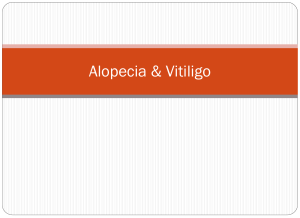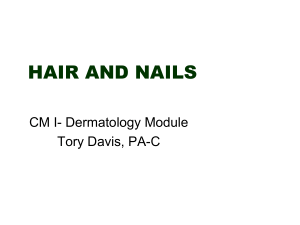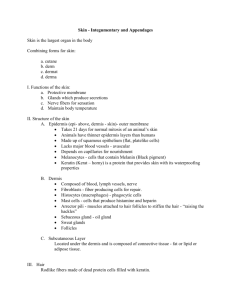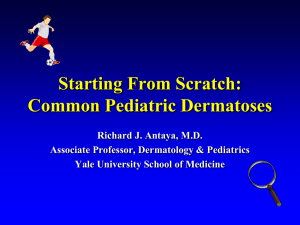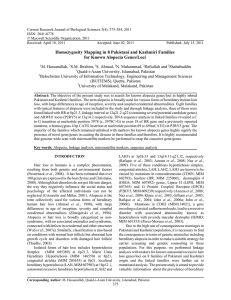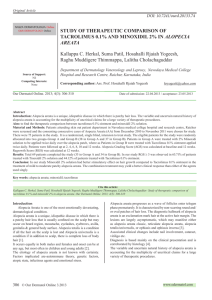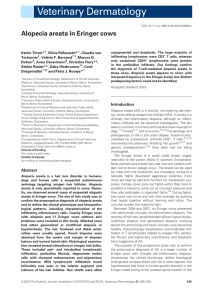Treatment
advertisement
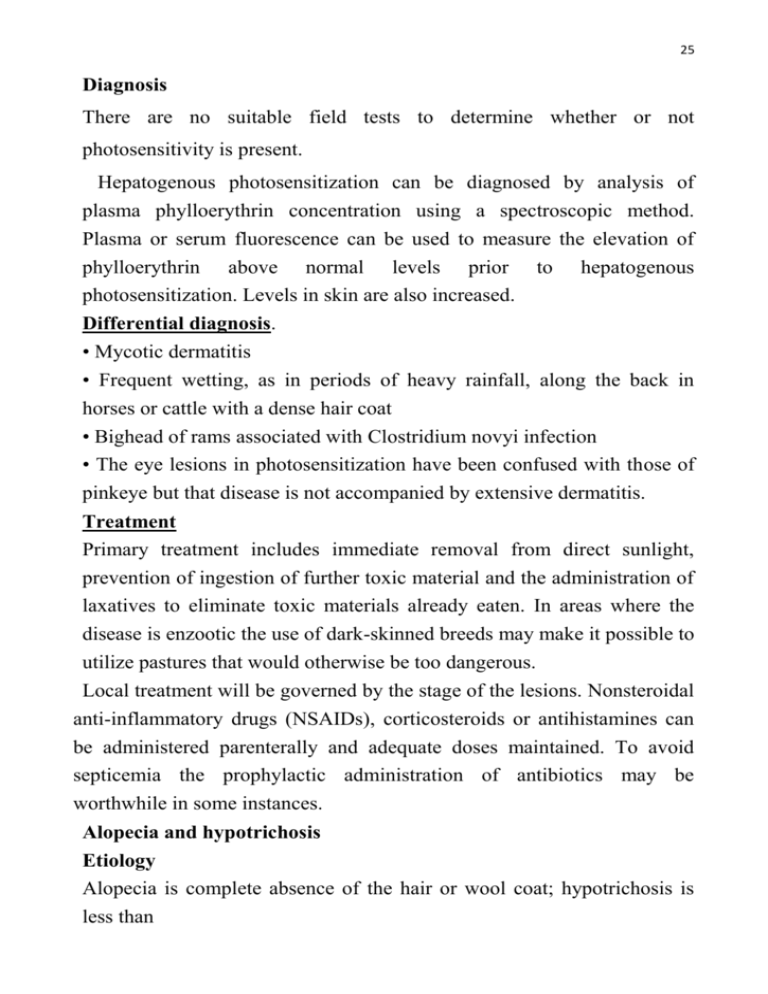
25 Diagnosis There are no suitable field tests to determine whether or not photosensitivity is present. Hepatogenous photosensitization can be diagnosed by analysis of plasma phylloerythrin concentration using a spectroscopic method. Plasma or serum fluorescence can be used to measure the elevation of phylloerythrin above normal levels prior photosensitization. Levels in skin are also increased. Differential diagnosis. to hepatogenous • Mycotic dermatitis • Frequent wetting, as in periods of heavy rainfall, along the back in horses or cattle with a dense hair coat • Bighead of rams associated with Clostridium novyi infection • The eye lesions in photosensitization have been confused with those of pinkeye but that disease is not accompanied by extensive dermatitis. Treatment Primary treatment includes immediate removal from direct sunlight, prevention of ingestion of further toxic material and the administration of laxatives to eliminate toxic materials already eaten. In areas where the disease is enzootic the use of dark-skinned breeds may make it possible to utilize pastures that would otherwise be too dangerous. Local treatment will be governed by the stage of the lesions. Nonsteroidal anti-inflammatory drugs (NSAIDs), corticosteroids or antihistamines can be administered parenterally and adequate doses maintained. To avoid septicemia the prophylactic administration of antibiotics may be worthwhile in some instances. Alopecia and hypotrichosis Etiology Alopecia is complete absence of the hair or wool coat; hypotrichosis is less than 26 the normal amount of hair or wool. Both may be caused by the following conditions. 1- Failur of follicles to develop - Congenital hypotrichosis. 2-Loss of follicles -Cicatricial alopecia due to scarring after deep skin wounds that destroy follicles. Cicatricial alopecia occurs following permanent destruction of the hair follicles, and reg rowth of hair will not occur. Examples include physical, chemical or thermal injury, severe furunculosis, neoplasia and certain infections such as cutaneous onchocerciasis. 3- Failure of the follicle to produce a fiber Inherited symmetrical alopecia Congenital hypotrichosis Hair- coat-color-linked follicle dysplasia Inherited dyserythropoiesis and dyskeratosis In baldy calves and adenohypophyseal hypoplasia Congenital hypothyroidism (goiter) due to iodine deficiency in the dam. After viral infection of the dam, alopecia congenitally in the newborn, e.g. after bovine virus diarrhea in cattle and infection by a similar virus in sheep (Border disease). Neurogenic alopecia due to peripheral nerve damage Infection in the follicle 4- Loss of preformed fibers Dermatomycoses – ringworm Mycotic dermatitis in all species due to D. congolensis Metabolic alopecia subsequent to a period of malnutrition Idiopathic hair loss from the tail-switch of well- fed beef bulls In sterile eosinophilic folliculitis of cattle Wool slip 27 Clinical findings When alopecia is due to breakage of the fiber, the stumps of old fibers or developing new ones may be seen. When fibers fail to grow the skin is shiny and in most cases is thinner than normal. In cases of congenital follicular aplasia, the ordinary covering hairs are absent but the coarser tactile hairs about the eyes, lips and extremities are often present. Absence of the hair coat makes the animal more susceptible to sudden changes of environmental temperature. There may be manifestations of a primary disease and evidence of scratching or rubbing. Congenital hypotrichosis results in alopecia which is apparent at birth or develops within the neonatal period. CLIN ICAL PATHOLOGY(Diagnosis) If the cause of the alopecia is not apparent after the examination of skin scrapings or swabs, a skin biopsy will reveal the status of the follicular epithelium. Diagnostic confirmation of alopecia is by visual recognition, the diagnostic problem being to determine the primary cause of the hair or fiber loss. Hypotrichosis is a reduction in numbers of fibers instead of a complete absence. TREATMENT Primary treatment consists of removing the causes of trauma or other damage to fibers. In cases of faulty follicle or fiber development treatment is not usually attempted.

